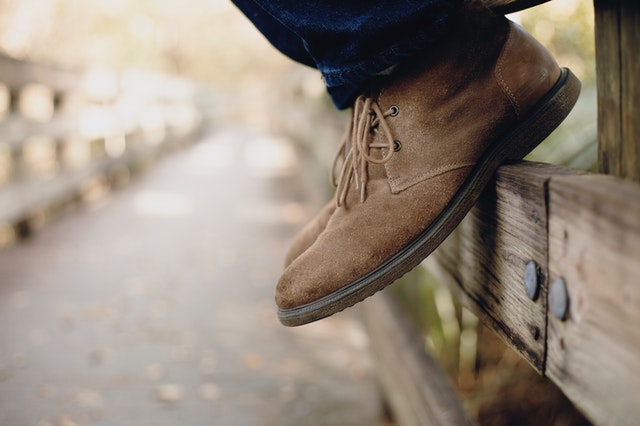Leather and suede are commonly used in the construction of new garments and accessories. You can find jackets, trousers, vests, shoes, belts and handbags made of these materials. Leather, in fact, is one of the most common materials in which jackets are made, whereas suede is commonly used in accessories. While leather and suede may look similar, though, they are two unique materials with their own properties. If you’re thinking about buying a new garment or accessory, you should learn the differences between leather and suede.
What Is Leather?
Leather is a strong yet soft material that’s derived from animal hide. Most types of leather come from sheep or cow hides. The hides are dehydrated and exposed to one or more chemicals for preservation purposes. A process known as tanning, it’s essential to creating long-lasting leather.
Some tanning methods involve the use of vegetable matter, whereas others involve the use of chromium sulfate and chromium salts. Regardless, tanning is the process that converts animal hide into leather. In its default state, animal hide isn’t considered leather. It must be tanned via exposure to vegetable matter or chromium compounds, which will convert it into leather.
What Is Suede?
Suede is a soft material with a fuzzy and napped finish. Technically speaking, it’s a type of leather. The term “suede” comes from the French word “grants de Suede,” which translates to “gloves from Sweden.” Based on the definition alone, though, you might be wondering what suede is exactly and how it differs from leather.
There are many different types of leather. As previously mentioned, leather is simply animal hide that’s tanned. Suede, though, falls under this category. It’s a special type of leather that features a fuzzy and napped finish. If you rub your hands across the surface of a suede garment or accessory, you’ll feel this fuzzy and napped finish.
Suede is characterized by this unique finish. Unlike other types of leather, it doesn’t have a smooth finish. Rather, suede has a fuzzy and napped finish that you can feel, as well as see, on the surface. It has ultra-thin fibers that protrude out of the surface, resulting in a fuzzy and napped finish. Other types of leather don’t have this same fuzzy and napped finish.
Other Types of Leather
Of course, suede isn’t the only type of leather. It’s one of several types of leather. There’s also top-grain leather. Top-grain is one of the strongest and more durable types of leather on the market. It includes the entire outer layer of the hide, which retains the complete surface.
Top-grain leather can be defined as either full or corrected grain. The latter undergoes a finishing process to remove imperfections while creating a smoother surface., whereas the former does not.
Another type of leather is split. Split leather lives up to its namesake by being split. The top layer of the animal hide is split away from the underlying layer. Split leather is typically thinner than top-grain leather. And because of its thin properties, it’s not as strong or as durable as top-grain leather. Nonetheless, leather is available in many different types, including top-grain, split and suede.

Differences Between Leather and Suede: What You Should Know
Being that leather and suede are both derived from animal hide, you might be wondering how they differ. One of the main differences between these two materials is that leather has a soft finish, whereas suede has a fuzzy and napped finish. The finish refers to the surface of a material. All suede garments have a fuzzy and napped finish. In comparison, leather garments typically have a soft and smooth finish.
Suede is also thinner than other types of leather. There are different ways to manufacture suede. Most manufacturing processes, though, involve the use of split leather. In other words, suede is made of split leather. It’s different from traditional split leather, though, by featuring a soft and napped finish. Nonetheless, suede is still thinner than other types of leather, including top-grain leather.
Suede is more delicate than leather. This is due to the fact that it’s thinner than most other types of leather. While top-grain leather is strong and durable, suede is not. The delicate properties of suede make it more susceptible to damage. These are just a few of the ways that leather and suede differ. When comparing the two materials, you may discover other nuances between them.
Why Leather Is the Better Choice
In most cases, leather outperforms suede. You’ll get greater use of garments or accessories made of leather than suede. Leather is stronger and more durable than suede, so it’s less likely to sustain damage when worn. You can wear leather garments day after day without fear of them degrading.
Many people also prefer the appearance of leather over than of suede. Leather offers a timeless appearance that’s become synonymous with traditional jackets. For over a century, leather has been used to make jackets. Leather jackets like bomber and biker jackets are still around today. And since their origins, little has changed regarding their appearance.
Leather requires less maintenance than suede. The problem with suede is that it’s a magnet for dust, dirt and debris. All types of suede have a fuzzy and napped finish. As dust, dirt and debris float through the air, some of it will stick to the surface of suede. Unfortunately, cleaning suede isn’t always easy. Because it’s a type of leather, it may develop mildew if you wash it in water. Therefore, you’ll have to spot clean suede regularly to prevent the buildup of dust, dirt and debris.
There are still reasons to consider choosing suede. Suede, for instance, weighs less than most other types of leather. If you’re trying to create a layered outfit consisting of multiple garments worn over each other, you may want to choose suede for this reason. Suede is a lightweight material that’s ideal for layered outfits.

